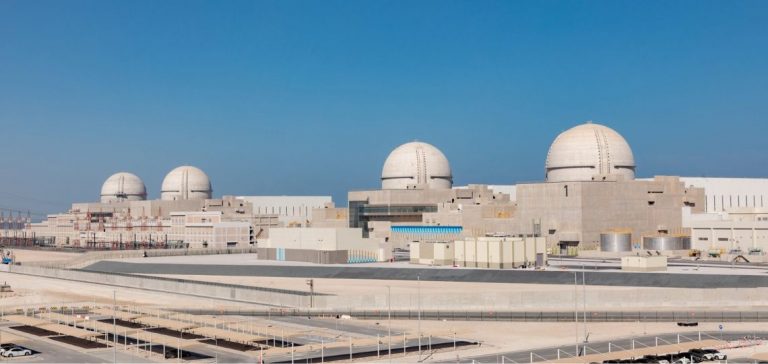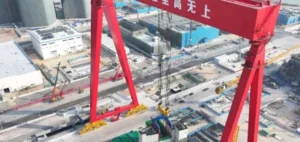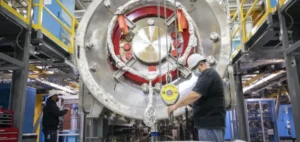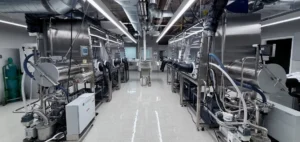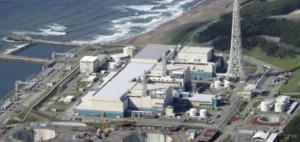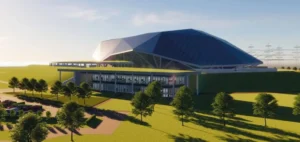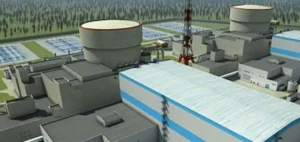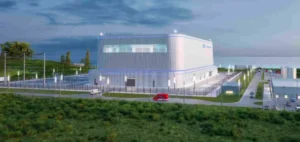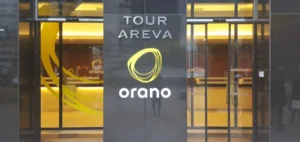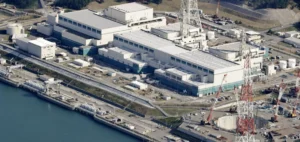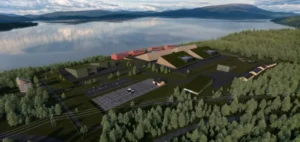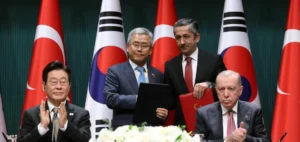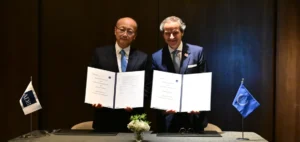The Middle East and North Africa (MENA) are regions historically linked to hydrocarbons, but the volatility of oil and gas prices, as well as the global energy transition, are pushing these nations to consider new ways of guaranteeing their energy security.
In the face of growing electricity demand, nuclear power is emerging as a strategic solution.
However, the nuclear ambitions of these countries are accompanied by major financial, technological and geopolitical challenges.
MENA energy context
The MENA region derives the majority of its economic income from hydrocarbon exports.
However, price volatility and the need to prepare for the global energy transition are driving these nations to rethink their energy model, and with expanding economies and growing populations, energy demand is increasing to support industrialization and urbanization.
Nuclear power is thus emerging as a strategic solution for providing abundant, stable electricity, without direct dependence on fossil fuels.
National strategies for the development of nuclear energy
Several countries in the Middle East and North Africa have ambitions to develop nuclear power.
Iran’s nuclear program is one of the oldest and most controversial in the Middle East, comprising several key facilities such as uranium enrichment infrastructures at Natanz and Fordow, and the Bushehr power plant, developed with Rosatom.
This plant uses a pressurized water reactor and produces around 1,000 megawatts of electricity.
In the longer term, Iran is aiming for a total nuclear capacity of 20,000 MW.
The United Arab Emirates launched the first Arab civilian nuclear power plant with the Barakah project, comprising four 1,400 MW reactors, developed in partnership with South Korea’s KEPCO (Korea Electric Power Corporation).
The plant will cover 25% of the country’s electricity needs.
For its part, Saudi Arabia, as part of its Vision 2030, plans to build 16 nuclear reactors by 2040, with a capacity of 17 GW.
In Egypt, the development of the nuclear program took a decisive turn in 2015 with the signing of agreements with Rosatom for the construction of the El Dabaac nuclear power plant.
This four-reactor project, totalling 4,800 MW, should be fully operational by 2030.
Jordan, 95% dependent on energy imports, initially planned a large-scale plant with Rosatom, but opted in 2018 for small modular reactors (SMRs) due to financial constraints.
In Turkey, the flagship nuclear project is the Akkuyu power plant, developed with Rosatom.
This site will comprise four reactors with a total capacity of 4,800 MW.
Kuwait, after two attempts to develop a civil nuclear program, finally abandoned the idea.
The first time was following the Three Mile Island accident in 1979, then after the Fukushima disaster in 2011.
In the 1970s, Libya attempted to acquire nuclear weapons by negotiating with countries such as China, the Soviet Union, India and Pakistan, while developing a civilian program with the help of the Soviet Union and then Belgium.
Under international pressure, these efforts were suspended in 1986.
From 1980 to 2003, Libya pursued its nuclear ambitions clandestinely, before dismantling its program under international supervision following an agreement with the United States and the United Kingdom.
Although the country is still unstable, the Libyan Atomic Energy Establishment is considering nuclear projects, including a plan for a power plant presented in 2015, although their realization is unlikely.
Algeria, meanwhile, has been interested in nuclear power since the 1970s.
However, the Chernobyl accident in 1986 slowed down these ambitions.
They were revived in the 2000s, with plans to open new power plants every five years from 2020.
Despite repeated delays, the government continues to assert these plans, with similar timeframes, looking 15 to 20 years ahead.
Geopolitical issues
Nuclear proliferation in the Middle East is a major source of geopolitical concern for regional powers alike.
Iran’s neighbors, such as Saudi Arabia and the United Arab Emirates, fear that Iran will use its civilian nuclear capabilities to develop weapons, which would profoundly destabilize the regional balance of power.
King Abdullah and Crown Prince Mohammed Ben Salmane have warned that if Iran were to obtain nuclear weapons, other countries would follow.
Rival powers consider a direct nuclear attack by Teheran unlikely, but fear that a nuclear-armed Iran would adopt a more aggressive foreign policy, intervening in Arab affairs and strengthening its grip on strategic points such as the Persian Gulf and the Strait of Hormuz, either directly or through its allies.
Israel, the region’s only presumed nuclear power, has historically carried out military operations against nuclear infrastructures in the region to maintain its strategic superiority, such as the strikes on the Osirak reactor in 1981 and in Syria in 2007.
In 2010, Israel also carried out the Stuxnet cyber attack, in collaboration with the USA, which disrupted Iran’s nuclear program by sabotaging its centrifuges.
Interventions by world powers
Russia, through Rosatom, plays a key role in nuclear expansion in the Middle East, using technology exports to strengthen its alliances and counterbalance American influence.
China’s strategy in the Middle East, via the Belt and Road initiative, aims to increase its influence by investing massively in infrastructure.
In the nuclear sector, the China National Nuclear Corporation (CNNC) has turned to partnerships, notably with Saudi Arabia, which plans to collaborate with China on its first nuclear power plants.
American influence in civil nuclear power is being challenged by Russia and China, which offer technologies with fewer political constraints.
Unlike the United States, which demands strict non-proliferation guarantees, these competitors adopt a more flexible approach, enabling Middle Eastern countries to diversify their nuclear partnerships.
Although less present, the European Union, notably France, remains a major player, with companies such as EDF and Framatome involved in major projects, notably in the UAE with the Barakah power plant, where EDF provides services linked to maintenance, operational safety and fuel cycle management.
Economic and technological challenges
The nuclear boom in the MENA region also poses major economic and technological challenges.
The high cost of nuclear power plants and the lack of local financial and technological capacity explain the dependence of many countries on international partnerships.
For example, Russia is financing 85% of Egypt’s nuclear project via a long-term loan of $25 billion, repayable over 22 years.
This “turnkey” model helps spread costs, but can become a burden if energy prices fall or cheaper alternatives become available.
Technologically, the construction and operation of power plants requires specialized skills that are often lacking in the region.
Training programs and international cooperation are essential to ensure the safety and efficiency of these projects.
Future prospects
The region is seeing an increase in interest in the development of new nuclear power plants beyond the projects already underway.
In the UAE, following the success of the Barakah plant, the construction of a second nuclear power plant is under consideration.
Turkey is in discussions to build two more nuclear power plants by 2050.
Potential sites include Sinop on the Black Sea and İğneada, close to the Bulgarian border.
Iran is also planning to add four new power plants in the south of the country.
Other countries, notably in the Maghreb, may explore nuclear power in the future.
Although Morocco does not yet have nuclear power plants for electricity generation, it has, like Tunisia, expressed interest in integrating nuclear power into its future energy mix as part of a strategy to increase its reliance on renewable energy sources.
Algeria is also considering the use of nuclear power to diversify its energy sources, in particular to meet growing demand for electricity and reduce its dependence on fossil fuels.
The future of nuclear power in the MENA region therefore looks promising, but will depend on a number of key factors.
However, the future of nuclear power in the MENA region will depend on several factors.
Security and non-proliferation will remain paramount, with the necessary safeguards to ensure that nuclear programs remain strictly civilian.
In addition, small modular reactors (SMRs), which are less costly and more flexible, could offer a viable solution for countries with lower financial capacity or facing electricity connectivity challenges.
Finally, energy diversification, combining nuclear power and renewable energies, could help reduce dependence on fossil fuels while ensuring stable, low-carbon production.


